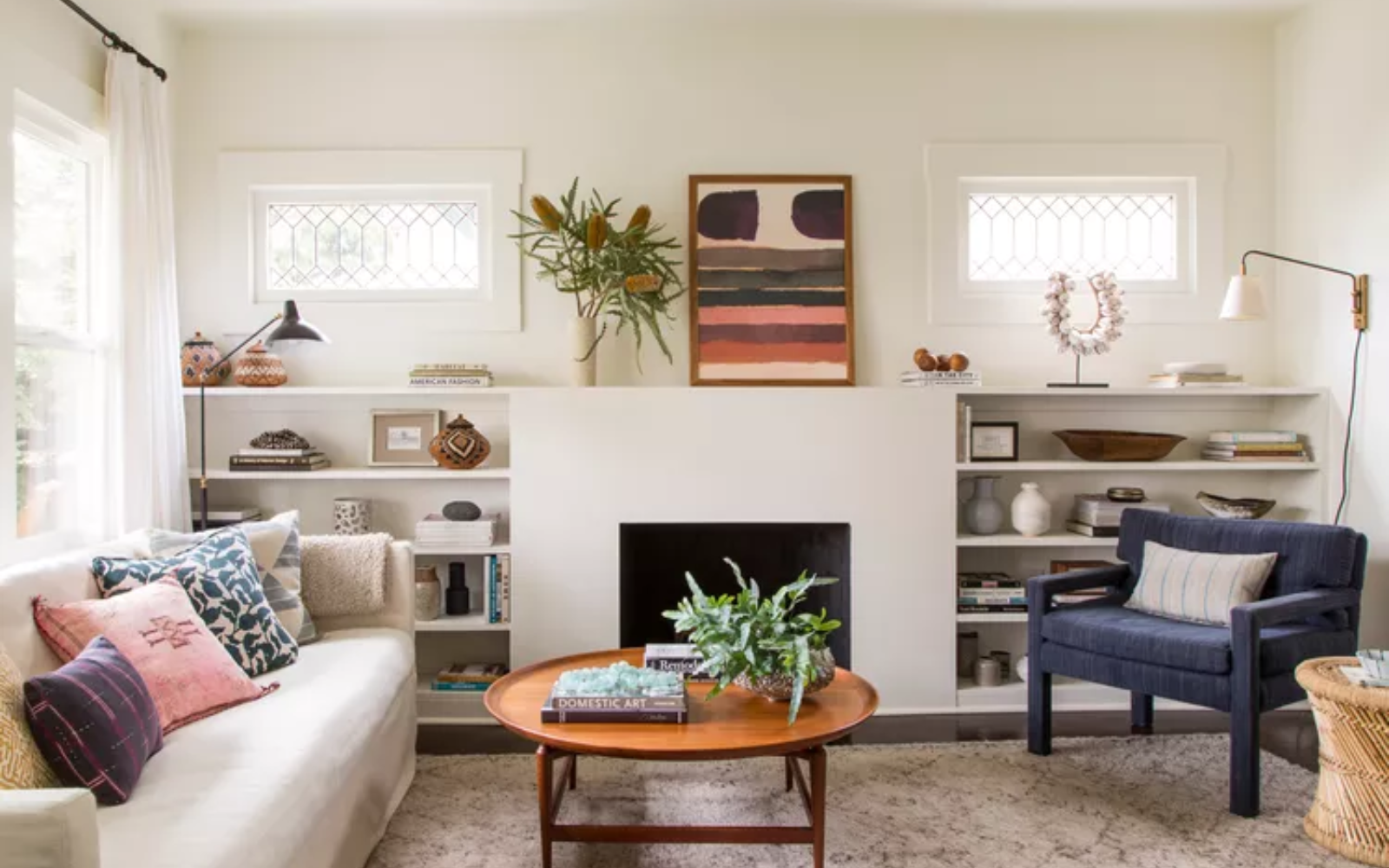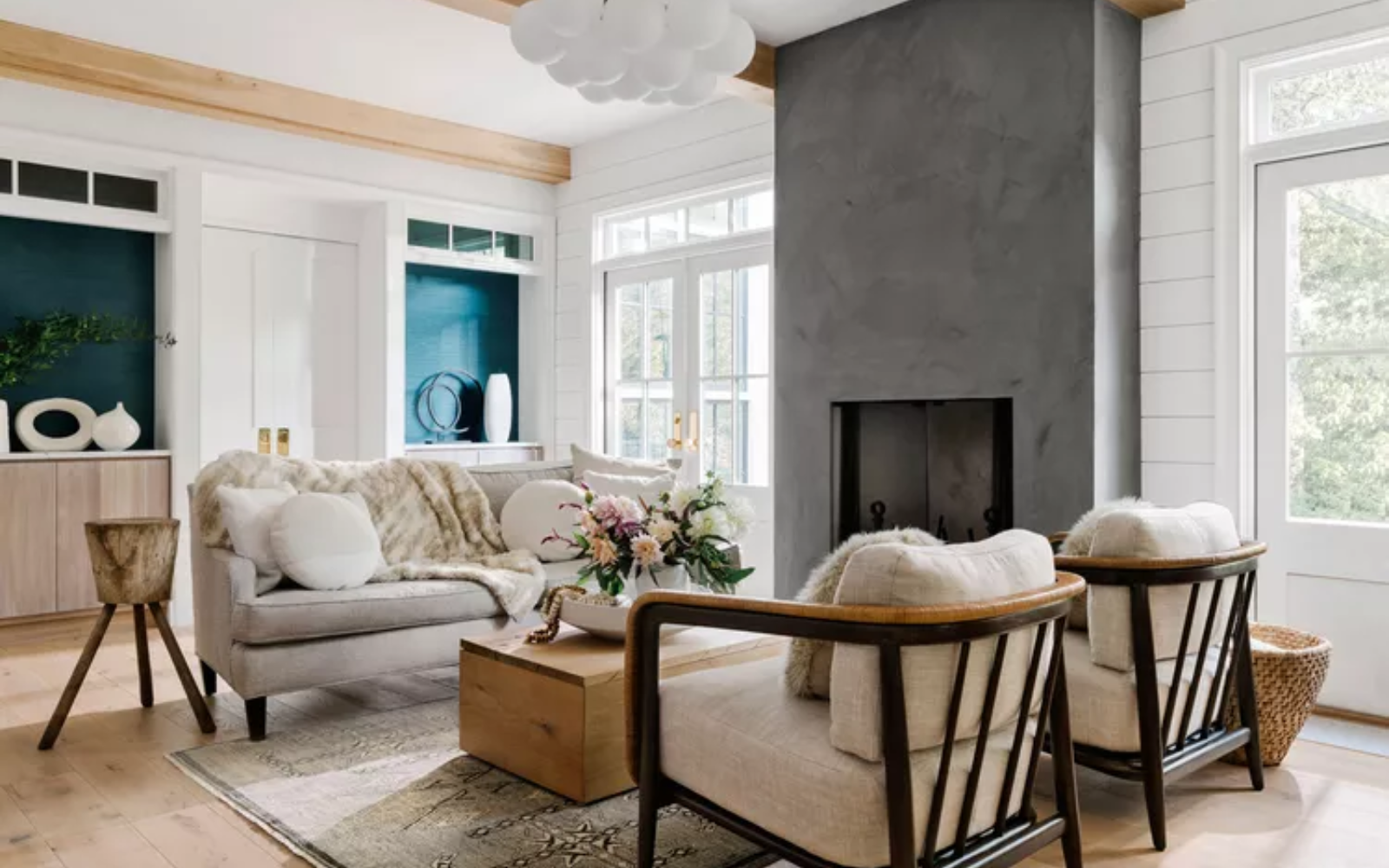How Much Does It Cost to Stage a House—And Is It Worth It?
By Kristine Gill | Better Homes
Experts outline the average cost to stage a home, including factors that affect costs and a breakdown of home staging expenses.
Preparing to sell your home includes embarking on a laundry list of tasks with conflicting advice from all sides. Friends and family might have might have told you that staging your home isn’t necessary, while your real estate agent might be suggesting it. So, do you need to stage your home? Or is a quick clean and decluttering just as effective?
“I can confidently say that staging always offers a return on investment,” says Dot Frank, a realtor with Better Homes and Gardens Real Estate Alliance Group. Still, the biggest factor in your decision will likely come down to cost. How much are you willing to spend, and is it worth that return on investment?
“The caveat is that staging doesn’t have to mean furniture rental, and the return isn’t always financial; it could be more calls and click throughs, more social shares, additional showings, increased open house attendance, or an expedited sale,” Frank says.
Real estate experts share the cost breakdown of staging your home, so you can decide if it’s worth it for your situation.
What Is Home Staging?
Like most services related to selling your home, home staging encompasses a wide range of costs and services. Some sellers will opt to pay for home staging, while others will stage their own homes. In between is a spectrum of hybrid services wherein you might let a home stager rearrange your own belongings, or have your home cleared out before staging furniture is brought in for your use.
“Best case scenario, the homeowner has items that simply need to be rearranged or removed by a consultant with an eye for design,” Frank says. “Next level of staging includes bringing limited items to complement existing decor. Finally, the most extensive staging is done in a vacant house.”
Home staging includes improving the look and feel of the home from the inside out, beginning with curb appeal. Maintaining your yard, cleaning up your home’s facade, planting new flowers, repainting the front door, and setting up a patio seating area can be a great start.
Inside the home, the consensus is that staging a home is a way of presenting a space so that potential buyers can envision their own life in your home. That means removing personal belongings, decor, photos and knick knacks that make it obvious the home belongs to a specific person or family. Another major step in staging a home is decluttering. Removing furniture and laying it out differently will make your home appear larger and make it easier for a potential buyer to imagine how they might use the space.
“The key trend to staging, which has always been the case, is creating a home environment that is neutral, where the property feels like a home but not someone else’s home; they don’t want to be reminded that they are walking through another person’s home and life,” says broker Tate Kelly of Coldwell Banker Warburg. “They want a blank slate where they can create their own new memories.”
If your furniture is outdated or in poor shape, you might consider removing it completely and letting a home staging company bring in their own furniture. Your real estate agent will likely have suggestions about what to remove, how to rearrange, and whether you should consider hiring a pro to do some or all of it for you.
“There is something to be said about the trend to present everything perfectly,” Frank says. “Home staging helps sellers achieve ‘Insta-worthy’ abodes that get seen and shared.”
How Much Does Home Staging Cost?
The cost of home staging varies based on the level of service you choose. Agent Emily Becker of Coldwell Banker Warburg, says staging fees typically include the cost of furniture rental, design and project management fees, as well as the delivery, setup and removal of items.
“The total number of rooms, bedrooms, and bathrooms, and whether there is private outdoor space in the home, in addition to the stager and broker’s vision for the space, are all factors that can change a staging price,” Becker says.
Depending on the market you’re in, you can find a more concrete price by shopping around for local services. “Staging costs vary widely based on the extent of services you need and can range from $150 for an in-home consultation to $1800 per month for full home furnishing,” says Frank, who is based in Bismarck, North Dakota.
“In NYC, for a two-bedroom apartment, we had staging prices range from as low as $9,000 to as much as $16,000,” Becker says.
Of course, different stagers will have different visions for the space, so overall costs will change in that respect as well. In a long-term, full staging arrangement, you’ll pay to borrow the furniture, typically on a monthly basis, until your home sells. The size of your home will dictate how much furniture is needed for staging, which will also affect price.
“Size is usually the most important factor going into the cost of staging, as the bigger the home, the more furniture and décor it requires,” Kelly says. “The second most important factor is the sale price; the higher the sale price, the more expensive the furniture and decor that is used. Certain other factors that affect cost include any cosmetic upgrades or renovations that might be needed. For example, the cost increases if the home is to be painted or if specific rooms need to be painted.”
In addition to the scope of services, where you live can affect how much your home staging costs.
“Key staging expenses include consultations and furniture rental,” Frank says. “In our market, consultations run roughly $150 and stagers typically charge clients a room-based rental fee that can run from $600 to $1800 per month”
“Location can impact costs when the staging company travels outside of its normal service area and mileage is charged. It’s good practice to ask about all fees and to obtain an estimate,” Frank adds.
Time of year can also play a role in the overall cost. “Staging might have more seasonal expense in warmer months if outdoor spaces such as porches, decks, or sunrooms are staged,” says Misty Darling, a broker and owner with Better Homes and Gardens Real Estate Innovations.
Can’t I Just Do It Myself?
Yes, you can stage your own home. But just like you could also technically cut your own hair, there’s likely someone out there who can do it better, faster, and in a way that ensures a good result.
“Home staging doesn’t have to be hired out,” Frank says. “Sellers can rely on the experienced eye of their agent or ask for staging resources. Additionally, the internet provides an abundance of tips for the DIY-type. However, I caution sellers to recognize their strengths and if home decor and design isn’t one of them, hire it out.”
“DIY staging may be beneficial in some cases, as opposed to no staging, but the ‘amateur stager’ or seller will definitely lack the ability to see the property through fresh eyes and overlook dated or worn aspects, which will be glaring to buyers,” Becker says.
Becker adds that the quality of the furniture and artwork you’re using can really matter to potential buyers. “A random mix of mismatched, sagging upholstery, tired bedspreads, dusty lampshades, mediocre artwork, and scratched furniture will neither enhance a property’s strong points nor disguise or detract from its detriments,” she says. “Additionally, faded or worn window treatments and carpets will only send negative messages.”
But there is something to be said for letting someone else stage your space, if it’s a task that hits too close to home. “One of the biggest benefits of hiring someone to stage is their objective approach,” Frank says. “It can be hard for a homeowner to set aside personal preferences. Third party stagers are strategic about the style and placement of furniture and decor. They also know how many or how few pieces to place; a skill that ensures success and saves money.”
Keep in mind many professionals will use your own furniture and rearrange it to save money while adding a professional touch.
“DIY staging can be tricky, as it tends to not have the finesse that a professional can add. I have found a cost-effective approach is using the homeowner’s furniture basics and a pro coming in and layering accessories and decor,” Darling says.
Frank also recently learned of an agent who rented furniture from a rent-to-own company when the local staging company wasn’t available. This could be a good way for a homeowner to get their hands on new, designer furniture without purchasing it. “The agent picked out a living room set and kitchen table; even an area rug and lamps,” Frank says. “The company delivered it the next day and she embellished the space with her own decor.”
Is Professional Home Staging Worth it?
Home staging might not be the reason your home sells quickly (or at all), but real estate experts agree it’s a service that provides a return.
“Statistically speaking, staging brings better offers,” Frank says. “According to the National Association of Realtors, staged homes result in offers 1% to 5% higher. On a $350,000 home, that’s an extra $3,500 to $17,500.”
Frank also encourages sellers to consider the current housing market when looking to pay a professional stager. “Lack of inventory and stable prices mean homes are selling in relatively short order. However, staged homes show better and typically lead to higher priced offers,” she says. “If cost and time support staging, sellers who do it can come out ahead.”
In New York City, agent Robert Elson of Coldwell Banker Warburg says staging can cost as much as $20,000 for a 1,500-square-foot apartment with two bedrooms and two bathrooms.
“However, that said, it has been proven repeatedly, depending on the size of the apartment, that the costs of staging can be easily recouped in the contract price–sometimes by as much as double, triple, or even quadruple–the costs of the staging,” he says.




